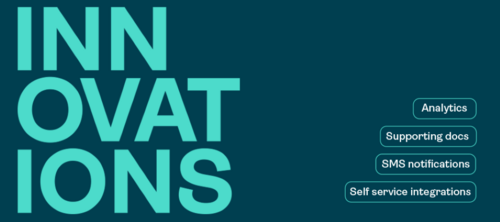How Walgreens and Walmart’s New Banking Ventures Will Shake Up Finance

Retail banking has changed dramatically over the past several years, with the rise of digital banking and tech-forward neobanks like Dave and Chime, which pushed incumbent financial institutions to develop their own mobile-first offerings. Now this competitive market is being disrupted again by two of the country’s biggest retailers, Walmartand Walgreens.
Both companies recently announced new banking initiatives designed to capture the mid-market consumer and monetize their most valuable asset: the loyal relationships they have with customers. Research shows the average person goes to Walmart or its website about 30 times a year.
Partnering with the fintech firm InComm Payments, Walgreens will be making its new bank accounts available online and at 9,000 of its retail stores across the nation in the second half of this year. With nearly 80% of the U.S. population living within five miles of a Walgreens, all but guaranteeing built-in foot traffic at its stores, Walgreens could be a formidable contender in the many areas of the country where bank branches have permanently closed. In addition, Walmart (teaming up with Ribbit Capital) is creating its own fintech startup, Hazel, which is likely to yield a broad ecosystem of financial services, such as bank accounts, lending, digital payments, and more, all led by a mobile-first “super app.” Similar to WeChat in China, such an app would integrate many aspects of consumer life, including commerce, finances, healthcare, and payments, all within a single hub.
Walmart and Walgreens are just the first of many non-traditional players that will be entering financial services in the coming years—and changing the very meaning of what we think of as banking. It’s easy to see why this sector is growing: the opportunities for both incumbent banks and new entrants to capture the currently two billion unbanked people around the world, as well as the estimated 169 million Americans who regularly use mobile devices for banking.
Will these retailers upend the financial services industry as we know it? Or will incumbent banks evolve their mobile-first offerings enough to keep their loyal customers and remain competitive? (Research shows that most people stick with the same bank for decades.)
Here are a few clues to look for as we watch this play out:
New Entrants Will Partner With Fintechs To Quickly Create Financial Services Offerings Built On Brand Loyalty
Retailers like Walmart and Walgreens already enjoy customer loyalty and brand recognition. By partnering with nimbler fintechs to provide convenient digital financial services that consumers desire, they are taking advantage of the move toward open banking that is already underway in the industry. Incumbent banks should also look to partner with innovative fintechs to provide the types of innovative new services consumers desire, such as digital wallets, mobile point-of-sale solutions, and P2P lending.
New Players Will Offer Invisible Security To Deliver An Exceptional And Secure Customer Experience
Retailers will need to bolster their cybersecurity practices for consumers to trust them as much as they trust their banks. By handling sensitive financial data, they will become targets for cybercrime and will need to invest in data security, anti-fraud, risk analytics, and strong authentication technologies, such as biometrics, to fend off attacks. Incumbent banks have the advantage of being able to show that they have been on the forefront of strong cybersecurity for many years.
Consumer Preferences For Digital Banking Will Largely Be Driven By Neobanks
Innovative new offerings from neobanks are driving consumer preferences for more digital services. By 2025, more than 40 million consumers are expected to have accounts at digital-only neobanks. Take, for example, Chime, which offers customers early access to their paychecks. Chime has been more successful than traditional banks at meeting consumers’ desires for new capabilities and product offerings, from P2P currency exchange to convenient mobile payment options. Similarly, new entrants like Walmart are experts at delivering a sophisticated mobile experience that consumers love. Incumbent banks will need to learn from their example and improve their mobile-first experience if they want to compete.
Banks Will Turn To Ai And Ml To Further Evolve Their Mobile-First Models
Retailers have learned to leverage artificial intelligence and machine learning to gain deep knowledge of consumer shopping behaviors. Incumbent banks should look to do the same in order to better understand their customers’ desires, provide more tailored offerings and services, and streamline processes. Consider the new account opening process at traditional banks, which has long been cumbersome and prone to high abandonment rates. By applying AI and ML technologies to the massive volumes of data made available to banks through consumers’ mobile devices, incumbent banks can verify identities and prevent application fraud while turning account opening into a one-click button, which is what consumers today expect.
The future of financial services has not yet been decided, but with the right technologies, incumbents can compete to win.
This blog, written by Benoït Grangé, Chief Technology Evangelist at OneSpan, was first published in Fast Company on July 29, 2021.








